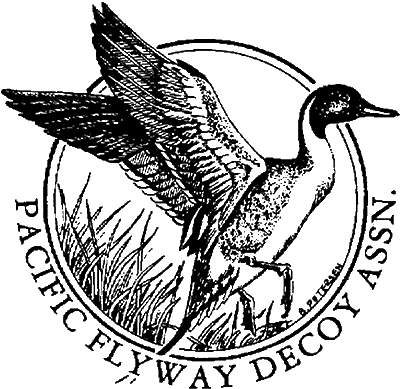Library of Congress Bicentennial Celebration Presentation - Page 3
Art isn't for Sissies

of complex and detailed competition carving.
Here is not a phrase, but a declarative sentence exactly right for T-shirts entirely memorable, and charged with the possibilities of offending just about everybody. It not only reflects all that the club has learned, but a determination to carry on in spite of it. But how did a group of decoy collectors,who formed a club to facilitate the search for and the preservation of old wooden decoys, manage to turn an obscure hobby into a show business exercise dedicated to upholding the virility of the arts? The answer requires a look backwards into the evolution of the old hunting decoy into art, and its eventual rise from a doorstop, to Wall Street.

in those sacks are his, he's carrying a fortune in today's
money.
The world's first organized decoy contest opened in the public library of Bellport, Long Island, in August 1923. A small budget event with modest local aims the promoters, mostly Bellport gentry, hoped to further sportsmanship and coincidentally conserve the Black Duck population of Great South Bay. The contest might have passed beneath the scope of history, except that a newspaper in a neighboring town could spare a reporter. He (or she) seems to have arrived late, surveyed the scene in a state of bemusement, noted a few basics, and decamped to waste two columns on trivialities, written in that fatuous manner of the Victorian/Edwardian sportswriters - leaving a legacy that has infected generations of journalists whenever they encounter a decoy contest, down to this day.
